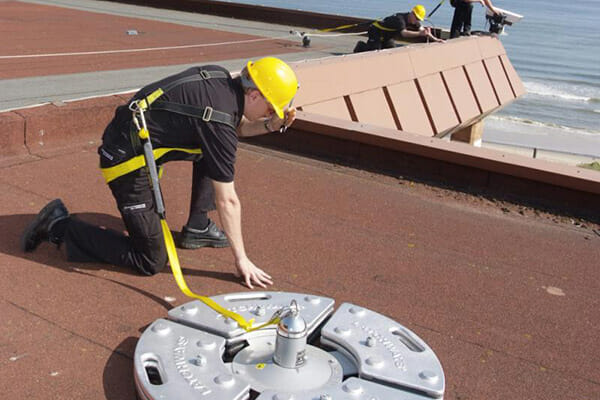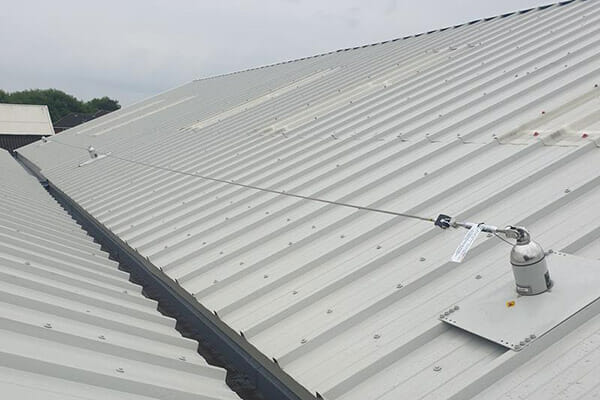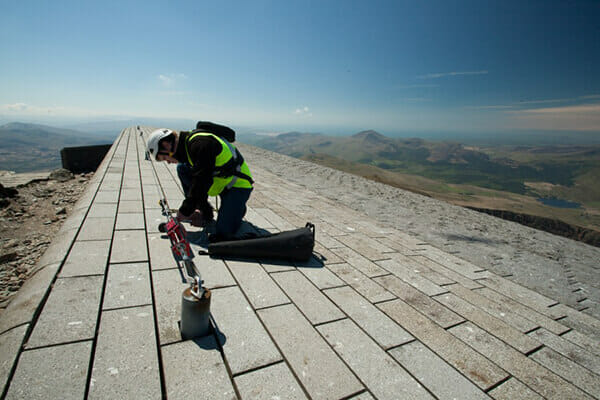PPE – Lanyards.
Shock-absorbing lanyards are one of the most commonly used components in a personal fall arrest system. All lanyards must be CE-marked and certified to EN 355:1992.
Before use, it is essential to ensure that every part of the system is compatible, correctly fitted and fully inspected. A lanyard is only as safe as the weakest component in the chain.
Compatibility Requirements.
To comply with UK and European standards:
- Full body harness: Must comply with EN 361
- Connectors / karabiners: Must comply with EN 362
- Additional or extension lanyards: Must comply with EN 354
- Length limit: A lanyard system must not exceed 1.8 metres. Do NOT extend by adding multiple connectors or extra lanyards.
If in doubt about compatibility, always seek technical advice.
Pre-Use Inspection of Lanyards
Lanyards must be inspected before every use and formally examined as part of periodic inspections.
Begin at one end and rotate the lanyard to check the full circumference, working methodically to the opposite end.
Below are inspection requirements for each component type.
1. Connectors & Snaphooks.
Inspect for:
- distortion of hook or eye
- cracks, corrosion, dents or pitting
- smooth operation of the keeper
- proper keeper seating without binding
- strong spring tension ensuring the keeper closes firmly
- functioning locking mechanism (must prevent accidental opening)
Any doubtful component must be removed from service immediately.
2. Thimbles
Check that:
- the thimble sits firmly inside the splice
- no strands in the splice are loose, cut or damaged
- the thimble has no cracks, distortion or sharp edges
3. Wire Rope Lanyards.
Always wear gloves when inspecting wire rope.
Check for:
- broken strands protruding from the rope
- crushing, flattening or unusual wear patterns
- frayed or cut wires
- corrosion or rust
- inconsistencies in diameter (may indicate overload damage)
4. Webbing Lanyards.
Bend the webbing over a mandrel (or round bar) to expose hidden damage.
Look for:
- cuts, tears, snags or abrasion
- swelling, stiffness or brittleness
- discolouration from chemical exposure
- burn marks or glazing from heat
- broken stitches
- activation of the warning flag (on shock packs)
Tubular lanyards must be measured to confirm whether the shock absorber has deployed.
5. Rope Lanyards.
Rotate the rope slowly and inspect for:
- fuzzy, worn, broken or cut fibres
- flat spots or areas of reduced diameter (sign of loading or shock)
- discolouration or chemical damage
- inconsistent rope thickness after break-in
The rope must feel uniform throughout.
6. Shock Absorber Packs.
Inspect:
- the outer cover for burns, tears or abrasion
- stitching that attaches the pack to the lanyard or connectors
- signs of deployment or activation
- deformation, stiffness or contamination
A shock pack showing ANY sign of activation must be removed from service.
Purchasing Lanyards & PPE.
For certified lanyards, connectors, SRLs and fall-protection equipment, visit our specialist PPE partner:
👉 Harnesses.co.uk – Professional PPE for working at height.
Lanyard Inspection Pre Use, Checks & Examination
When inspecting lanyards, begin at one end and work to the opposite end. Slowly rotating the lanyard so that the entire circumference is checked. Additionally follow the procedures below.



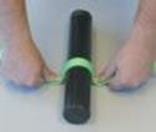
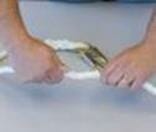
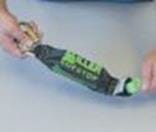
Hardware
Snaps: Inspect closely for hook and eye distortions, cracks, corrosion, or pitted surfaces. The keeper (latch) should seat into the nose without binding and should not be distorted or obstructed. The keeper spring should exert sufficient force to firmly close the keeper. Keeper locks must prevent the keeper from opening when the keeper closes.
Thimbles
The thimble must be firmly seated in the eye of the splice, and the splice should have no loose or cut strands. The edges of the thimble must be free of sharp edges, distortion or cracks.
Wire Rope Lanyard
Always wear gloves when inspecting a wire rope lanyard as broken strands can cause injury. While rotating the wire rope lanyard, watch for cuts, frayed areas or unusual wearing patterns on the wire. Broken strands will separate from the body of the lanyard.
Web Lanyard
While bending webbing over a pipe or mandrel, observe each side of the webbed lanyard. This will reveal any cuts, snags or breaks. Swelling, discolouration, cracks and charring are obvious signs of chemical or heat damage. Observe closely for any breaks in stitching. Inspect lanyard warning flag for signs of activation. Titan tubular lanyards must be measured to determine activation.
Rope Lanyard
Rotate the rope lanyard while inspecting from end-to-end for any fuzzy, worn, broken or cut fibers. Weakened areas from extreme loads will appear as a noticeable change in original diameter. The rope diameter should be uniform throughout following a short break-in period.
Shock Absorber Pack
The outer portion of the pack should be examined for burn holes and tears. Stitching on areas where the pack is sewn to D-rings, belts or lanyards should be examined for loose strands, rips, deterioration or other signs of activation.
Should you require lanyards as part of your personal protection requirements, please visit our partners at harnesses.co.uk


